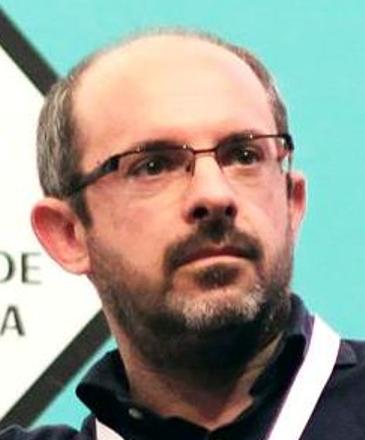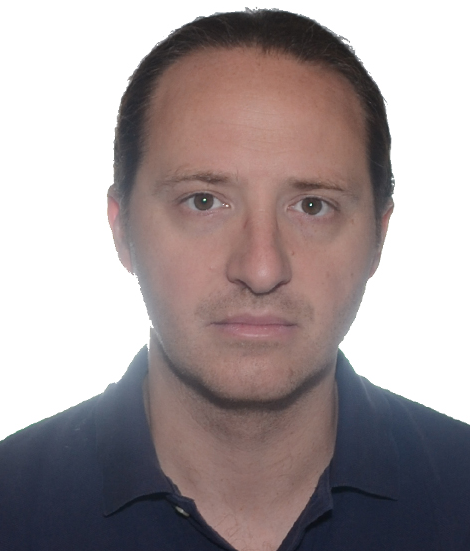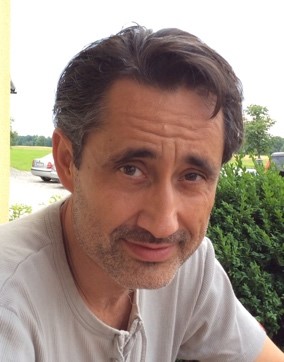Keynotes & Tutorial
Keynotes
5G challenges and contributions regarding reliability
Extending 5G beyond mobile broadband enhancements, presenting effective support to massive and, especially, critical IoT use cases, requires remarkable enhancements in cellular key capabilities. High devices and connections density, energy efficiency and lower latency are the most relevant. Reliability, defined as “the capability to provide a given service with a very high level of availability”, is also identified as an imperative enabler for the development of a new generation of machine-centric communications. It is an essential aspect in the areas of e-health, real-time traffic control and optimization, emergency and disaster response, smart grid or efficient industrial communications, fitting in Ultra Reliable and Low Latency Communications (URLCC), as defined by ITU-R (ITU-R, M.2083).
3GPP specification work addresses that, defining a new architecture and radio for 5G, integrating the mechanisms and characteristics that will increase 5G reliability as compared to previous generations of mobile communications. First 3GPP 5G specifications (Phase 1/Rel-15), approved last July, permit 5G to go into production during 2019. Focusing at broadband connectivity enhancements (bandwidth and mobility), the new radio and architecture already provide latency reduction and better energy efficiency. 5G modular and service-based architecture provides flexibility and is suited to integrate other technologies in its deployment, like NFV and MEC, both under ETSI standardization, and being important contributors to 5G reliability enhancements.
However, only 5G Phase2/Rel-16 will address the full range of use cases, especially the URLLC ones. Effective data redundancy and diversity, bounded latencies, stringent timing mechanisms, will be incorporated to enhance reliability, latency and jitter control, opening the door to demanding applications like industrial wireless use cases.
End-to-end 5G reliability also depends on other external factors. Front/backhauling and transport networks, monitoring and management systems, play an important role in this. Operators need to invest in improving those networks and systems to achieve a highly efficient, available and reliable network, having 5G as the access part.
Altice Labs is planning to run use cases with local industries, finding the best solutions and configurations, and testing the 5G technology for URLCC support. These include, among others, transportation, smart grids, drones, eHealth, fishing and industry.
This keynote talk will introduce the 5G technology, highlighting its main characteristics and performance improvements. Latency and reliability will be focused, identifying how 5G addresses those, providing support to ITU-R URLCC requirements. Considering a holistic view, challenges, especially external ones, will be identified and characterized. Altice Labs planned experiments in the area will be presented.
 by Francisco Fontes (Altice Labs, Portugal)
by Francisco Fontes (Altice Labs, Portugal)
Francisco Fontes received his degree in Electrical and Computers Engineering from the Instituto Superior Técnico - University of Lisbon (Sep/91) and his PhD (Nov/00) from the Technical University of Madrid, in the Telematics Engineering Department, in the area of Distributed Management of Telecommunication Networks. Since Sept/91 he has been working with Portugal Telecom, with main activities in several research areas (including participation in several EC funded projects, from RACE II to H2020), demonstration projects, training to PT staff and internal and external consultancy. More recently, he has focused on Next Generation Networks architectures, as a Technology Senior Consultant at Altice Labs (a PT Portugal company, owned by Altice), being responsible for the establishment of solutions in some PT clients. He has specialized in IP networks, with a focus in local and fixed access networks (DSL, GPON and HFC), IPv6 and Multicast but also in IMS, EPC and VoLTE, C-RAN and MEC. More recently he focused in the SDN and NFV areas, and the 5G technology. From Sep/02 to Set/12, he has collaborated with the University of Aveiro, Department of Electronics Telecommunications and Informatics (DETI), as invited professor, teaching and coordinating MsC and PhD students, in the areas of IP telecommunication networks and related services. He is a senior researcher of Instituto de Telecomunicações and member of the board for the Aveiro pole.
Reliable Optical Metro Networks for 5G communications
For some "ultra-reliable" services, 5G communications envision availability requirements in the order of 5, or even 6, nines. These availability targets can be achieved over highly-meshed and safely-designed core networks, but they are not realistically achievable over ring/tree-based optical metro networks. The current evolution of optical metro networks from rigid aggregation infrastructures to composite network-and-computing ecosystems offers new opportunities to provide the requested availability to critical services. This evolution is happening on several directions as i) network control moves towards Software Defined Networking (SDN); ii) metro nodes become edge data centers (edge computing); iii) network slicing allow logical partitioning of network and processing resources; iv) new mobile network architectures based on C-RAN and fronthaul get introduced. This keynote will address how these new technical directions can help design reliable optical metro networks in the advent of 5G.

by Massimo Tornatore (Politecnico di Milano, Italia & University of California, Davis, USA)
WG2 leader of COST CA15127 Action "Resilient Communication Services Protecting End-user Applications from Disaster-based Failures" (RECODIS).
Massimo Tornatore (S’03–M’06–SM’13) is currently an Associate Professor with the Department of Electronics, Information, and Bioengineering, Politecnico di Milano, where he received a Ph.D. degree in 2006. He also holds an appointment as Adjunct Professor at University of California, Davis, USA and as visiting a professor at the University of Waterloo, Canada. His research interests include performance evaluation, optimization and design of communication networks (with an emphasis on the application of optical networking technologies), cloud computing, and machine learning application for network management. In these areas, he co-authored more than 300 peer-reviewed conference and journal papers (with 13 best paper awards), 1 book and 1 patent. He is a member of the Editorial Board of IEEE Communication Surveys and Tutorials, IEEE Communication Letters, Springer Photonic Network Communications, and Elsevier Optical Switching and Networking. He is an active member of the technical program committee of various networking conferences such as INFOCOM, OFC, ICC, and GLOBECOM.
Reliable networking in the Secure Networking for a Data Center Cloud in Europe (SENDATE) project
The CELTIC SENDATE project running since 2016 and ending in 2019, with funding from Germany, France, Sweden and Finland, aims at providing the scientific, technical, and technological concepts and solutions for
- A clean-slate architecture supporting the application scenario demands
- Intra-DC -security, -control, -management, and -orchestration
- Inter-DC -security, -control, -management, and -orchestration
- Placement, control, and management of Virtual Network Functions (VNF)
- High speed transport networks to interconnect servers in a DC, data centers together, and the end users.
Reliability has been an important topic within SENDATE, and in my talk, I will review some of the activities related to reliability, including:
- how to detect a fiber will break even before it actually breaks and proactively reroute traffic and re-allocate resources such as VNFs,
- how to operate optical networks closer to their margins thanks to monitoring,
- how to provide performance guarantees in the edge cloud networks for ultra-reliable communication,
- failure dynamics in Software Defined Networking.

by Yvan Pointurier (Nokia Bell Labs, France)
Yvan Pointurier (IEEE Senior Member) received a Ph.D. from the University of Virginia, USA in 2006. Between 2006 and 2009, he was a postdoctoral fellow at McGill University in Montreal and then a senior researcher at AIT, Greece. In 2009, Dr. Pointurier joined Alcatel-Lucent (now Nokia) Bell Labs as a research engineer, and is now the head of the “Dynamic Optical Networking and Switching” department at Nokia Bell Labs. His team is working on circuit and optical packet switched networks, with activities ranging from the physical layer to planning algorithms. Dr. Pointurier has authored or co-authored more than 15 European and US patents, and over 100 technical papers in leading journals, key conferences (OFC, ECOC, ACM Internet Measurement Conference, IEEE Infocom, ICC, Globecom), several of them top-scored, and book chapters. He received a best paper award at the IEEE ICC conference in 2006 and an IEEE Communication Letters Exemplary Reviewer award in 2014 and 2016 (top 3% of the reviewers). Dr. Pointurier is an associate editor for IEEE/OSA Journal of Optical Communications and Networking and a TPC member for OFC between 2019-2021, and he was a TPC member for IEEE ICC and PSC. He is currently the French coordinator for the CELTIC+ SENDATE-TANDEM project, a 36-month, 2200 person-month project led by Nokia Bell Labs.
Tutorial Session
Driving towards a reliable edge
There is no doubt on the influence “the edge” may bring to our lives in the coming future. Indeed, novel paradigms such as IoT and fog, along with other traditional though recent such as cloud, must join efforts to make the most out of the edge concept. Certainly, the scientific community is yet discussing on novel strategies, solutions, and mechanisms intended to turn edge related benefits into tangible assets that may substantially contribute to optimize resources utilization, improve the way services are executed and contribute to the development of new ones, as well as facilitate the development of novel business models encouraging traditional providers (cloud or telco) to play into this exciting game. However, many highly disrupting issues are yet challenging an immediate development. Indeed, aspects related to interoperability, security, coordination, standards or even scalability pop up as key non-solved problems. In short, although we all have been discussing for long about the benefits of IoT, edge and fog computing, there is still a long road towards the development of an “edge world”. This tutorial addresses key aspects related to current challenges to make this world to become a reality, particularly focusing on topics related to edge, fog and cloud coordination, envisioned as mandatory to build a reliable edge world.

by Xavi Masip (Universitat Politècnica de Catalunya)
M.Sc. and Ph.D. in Telecommunications Engineering from the Universitat Politècnica de Catalunya (UPC), Xavi is Professor at the Computer Architecture Department at UPC, serving as the CRAAX Lab Director from its foundation in 2008. Xavi is actively working in the areas of cloud and fog/edge networking, IoT, SDN, programmable networks, smart networks, QoS/QoE management and security provisioning, efficient data management and network management. Special focus goes into the applicability of innovative fog-based models to distinct verticals, including cities, transportation, health, robotics and farming.
Xavi has participated and coordinated several national and EU funded research projects (FP5, FP6, FP7 and H2020) as well as contracts with public institutions and industries (Cisco, IBM, Huawei). Currently, he is actively participating in the H2020 projects CIPSEC and mF2C, as well as leading a contract with Huawei. He has been invited professor at the Lissi lab in the University Paris-Est Creteil in 2011 and 2012. Xavi is serving as editor for the OSN and Computer Communications Journals, has led several special issues in distinct journals and has chaired several international conferences and symposiums. His publications include more than 150 papers in national and international refereed journals and conferences. Xavi’s activity was recognized with a 2016 IBM Faculty Award.

